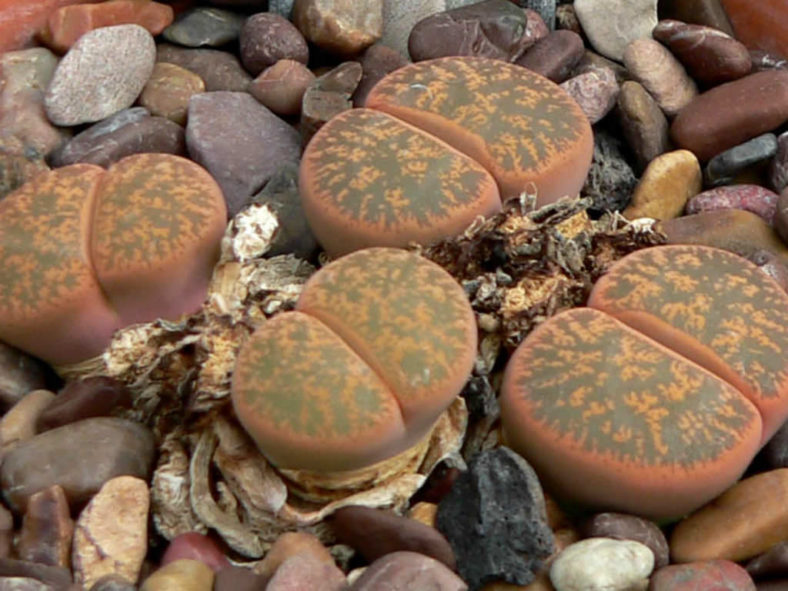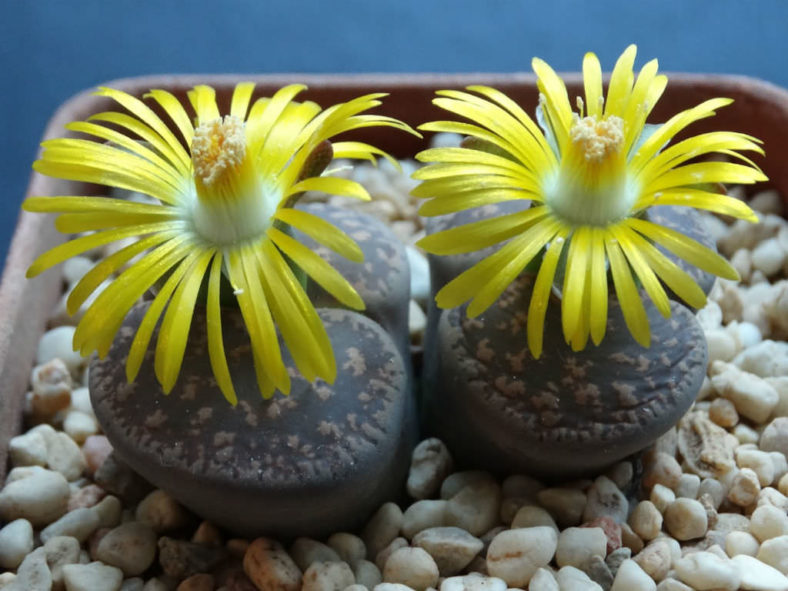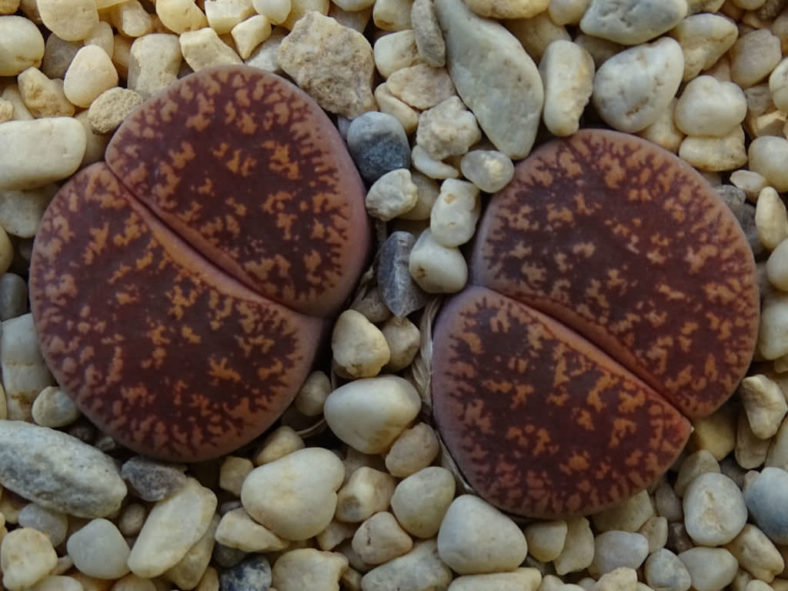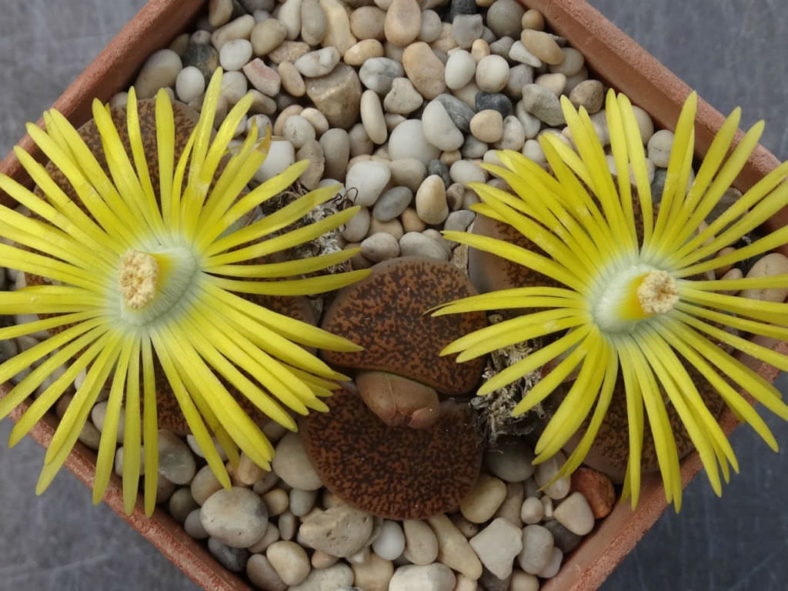Scientific Name
Lithops lesliei (N. E. Br.) N. E. Br.
Common Name(s)
Leslie's Living Stone, Living Stone Plant, Living Stones, Mimicry Plants, Pebble Plant, Stone Faces, Stone Plant
Synonym(s)
Mesembryanthemum lesliei
Scientific Classification
Family: Aizoaceae
Subfamily: Ruschioideae
Tribe: Ruschieae
Genus: Lithops
Etymology
The specific epithet "lesliei (LES-lee-eye)" honors T. N. Leslie. The species was collected by Oven, the youngest son of T. N. Leslie, in 1908.
Origin
Lithops lesliei is native to South Africa. It grows in rocky areas of grasslands and savannas.
Description
Lithops lesliei is a small, almost stemless succulent with soft rootstocks that produces a pair of leaves with the shape of an inverted cone. The leaves come in various colors, including shades of green, pink, brown, grey, and orange. The flat upper surface of the leaves can reach up to 1.6 inches (4 cm) in width and has attractive dark-green translucent markings.
The solitary yellow flower is daisy-like and appears in fall from the fissure between the leaves, reaching up to 2 inches (5 cm) in diameter.

How to Grow and Care for Lithops lesliei
Light: Lithops have adapted to intense sunlight in the wild, requiring direct sunlight when grown indoors.
Soil: These plants thrive best in a growing medium that will drain quickly. Use a commercial succulent soil mix or make your own potting mix.
Hardiness: Lithops lesliei can withstand temperatures as low as 20 to 50 °F (-6.7 to 10 °C), USDA hardiness zones 9a to 11b.
Watering: Lithops have a specific yearly growth cycle, and it is important to water only during certain stages, but it is also important to keep the soil dry at other stages of their growth. Never water Lithops deeply when they are dormant.
Fertilizing: These succulents do not need to be fertilized. Lithops will thrive without any feeding. If you feed, use a high potassium and low nitrogen levels fertilizer.
Repotting: Lithops will happily stay in the same pot for several decades. The common reason for repotting is to divide the plants or allow growing space for clusters.
Propagation: Lithops can be propagated by division if you have multi-headed plants, but they are most often grown from seeds.
Learn more at How to Grow and Care for Lithops.
Toxicity of Lithops lesliei
Lithops are non-toxic and safe to have around children and pets.
Varieties, Forms, and Cultivars of Lithops lesliei
Links
- Back to genus Lithops
- Succupedia: Browse succulents by Scientific Name, Common Name, Genus, Family, USDA Hardiness Zone, Origin, or cacti by Genus
Photo Gallery
Click on a photo to see a larger version.


